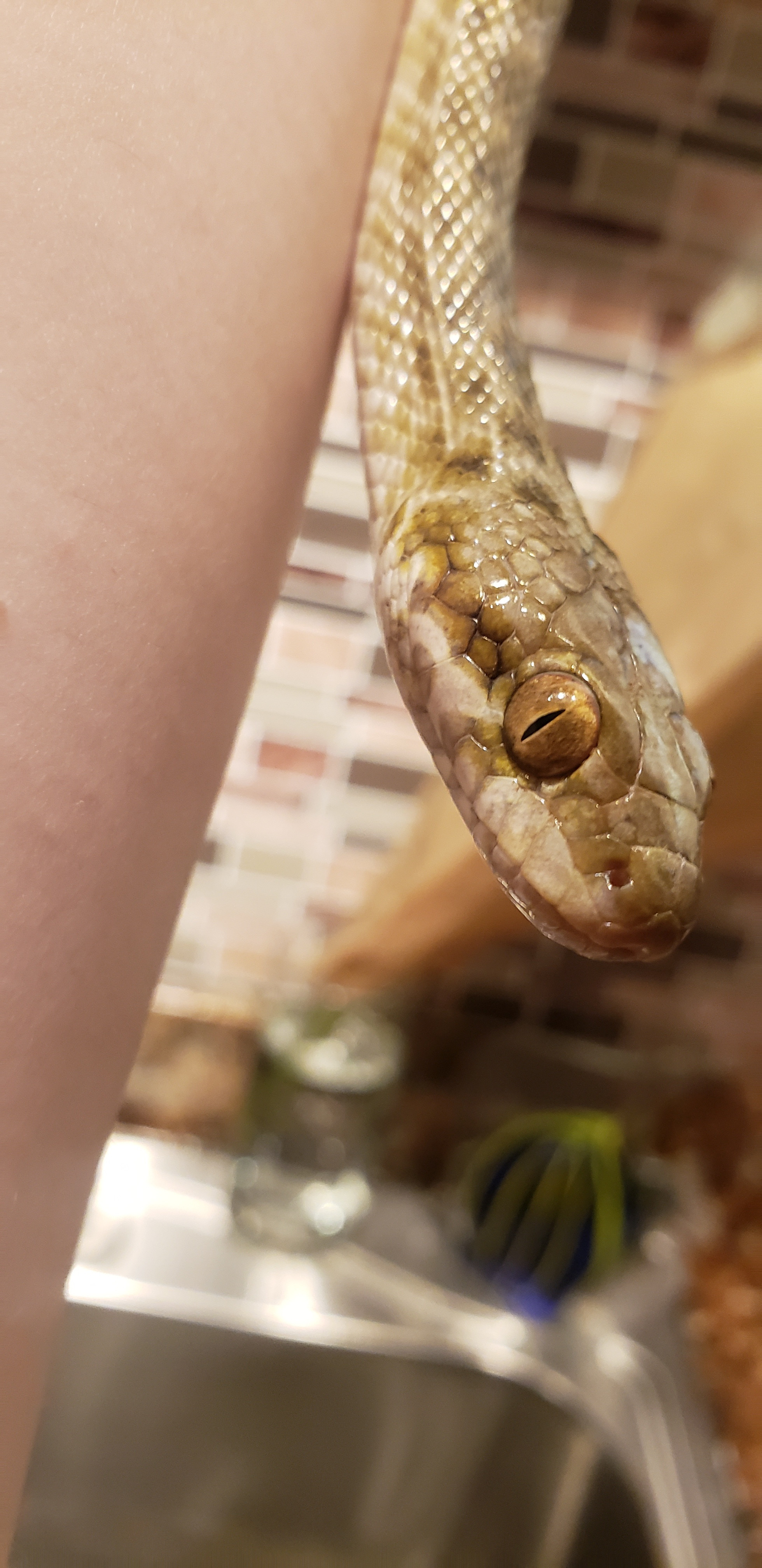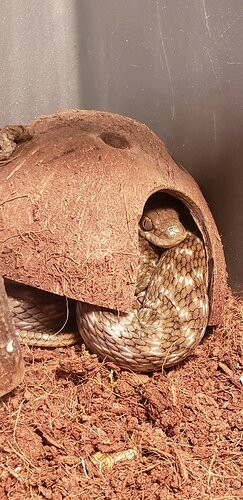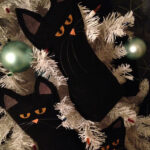Malagasy Cat-eyed snakes, often simply referred to as “Cat Snakes,” aren’t the most commonly kept reptiles, leading to limited information available for enthusiasts. As someone who has cared for one of these fascinating creatures for several years, I want to share my personal knowledge and insights into their care, based on my own experiences and observations.
 Malagasy Cat-Eyed Snake Relaxing in Enclosure
Malagasy Cat-Eyed Snake Relaxing in Enclosure
Temperature Requirements for Cat Snakes
One of the remarkable aspects of cat snakes is their adaptability to a wide range of temperatures. In my setup, I ensure a temperature gradient, offering a warm basking area reaching 90-95°F (32-35°C) and a cooler zone in the 70s°F (around 21-26°C). I’ve successfully utilized various heating methods including heat lamps, ceramic heat emitters, and heat tape. Currently, my cat snake resides comfortably in a rack system utilizing heat tape as the primary heat source.
Humidity Considerations for Cat Snake Habitats
Cat snakes in their natural Malagasy habitat encounter diverse humidity levels. To replicate this, I provide a humidity hide within the enclosure. This allows my cat snake to regulate its own humidity needs, and this approach has proven to be effective for maintaining its health and well-being.
 Close-up of a Malagasy Cat-Eyed Snake Head
Close-up of a Malagasy Cat-Eyed Snake Head
Enclosure Design for Cat-Eyed Snakes
While I’ve observed my cat snake exhibiting some climbing behavior, they are primarily terrestrial. Therefore, I recommend an enclosure that is more terrestrial-focused but still incorporates branches or climbing opportunities. A tank like an FB70 provides ample space for an adult cat snake. It’s crucial to note that these snakes are exceptional escape artists. They possess an incredible ability to squeeze through incredibly small gaps – I’ve personally witnessed mine escaping through cracks that seemed too narrow even for my pinky finger. Their bodies are remarkably flexible, allowing them to flatten themselves significantly. Secure enclosures are therefore paramount.
Substrate Options for Cat Snake Enclosures
Throughout my time caring for this species, I’ve experimented with various substrates. Currently, I use coco coir, which works well. I’ve also successfully used aspen shavings and even paper towels without any issues. Interestingly, I have observed my cat snake engaging in burrowing behavior on occasion, suggesting they appreciate the option to dig and hide.
Lighting Needs for Malagasy Cat-Eyed Snakes
As nocturnal creatures, cat snakes do not require any specialized lighting. Standard room lighting is sufficient for their needs, and they are most active during the nighttime hours.
Dietary Habits of Cat Snakes
My cat snake was originally imported, which may contribute to its somewhat finicky eating habits. While it sometimes accepts frozen/thawed rodents, it frequently refuses them, instead showing a preference for smaller prey items like birds and lizards. This might be specific to my individual snake, but it’s worth noting that it consistently refuses prey items that are wider than its head. This observation might be helpful when selecting appropriate food sizes for your cat snake.
Understanding Cat Snake Venom
Malagasy cat-eyed snakes are rear-fanged, possessing a mild venom. I experienced a bite firsthand when my snake মিসed the tongs during feeding and grabbed my hand instead. Venom effects can vary from person to person. In my case, the bite resulted in an immediate burning sensation as the fangs penetrated. I experienced minimal swelling and only slight redness. The burning sensation subsided within minutes, but a throbbing ache persisted in the area for about an hour. Interestingly, I personally find the venom of a western hognose snake to elicit a stronger reaction than that of my Malagasy cat-eyed snake. Despite the mild venom, caution and respect are always advised.
Cat Snake Temperament and Handling
It’s important to remember that each snake has its own unique personality. My cat snake, even as a fresh import, has consistently displayed a remarkably docile temperament from the beginning. The most defensive behaviors I’ve observed are defecating as a defense mechanism and occasional irritated huffing. Otherwise, handling is generally very easy and stress-free. However, until you become familiar with your individual cat snake’s temperament and your own reaction to their venom, I strongly recommend using a snake hook during interactions as a safety precaution.

